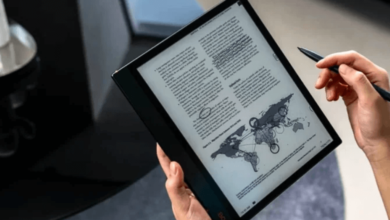Tabletwritings: Redefining Creativity in the Digital Era

The digital era has revolutionized creativity, transforming how individuals and professionals approach artistic expression, communication, and innovation. At the forefront of this transformation lies tabletwritings—a practice enabled by tablets and styluses that blend traditional handwriting with cutting-edge digital tools. This fusion of technology and creativity is redefining artistic possibilities, empowering creators, and reshaping industries.
Understanding Tabletwritings
Tabletwritings refer to the use of tablets equipped with styluses or pens to create handwritten content, art, or designs in a digital format. Unlike conventional writing tools, these devices offer a seamless interface that combines the tactile experience of handwriting with the versatility of digital editing and sharing. The practice has gained immense popularity among writers, artists, educators, and professionals for its ability to bridge the gap between analog and digital worlds.
Evolution of Tablet Technology
The journey of tablet technology began with early digital drawing boards and evolved into sophisticated devices capable of high-resolution displays, pressure sensitivity, and intuitive interfaces. From the launch of the first iPad to the rise of industry-specific devices like the Wacom tablet, technological advancements have played a pivotal role in making tabletwritings a mainstream phenomenon.
The Tools Behind Tabletwritings
1. Tablets
Modern tablets like the iPad Pro, Samsung Galaxy Tab, and Microsoft Surface are equipped with powerful processors, vibrant displays, and robust stylus support, making them ideal for tabletwritings.
2. Styluses
Styluses such as the Apple Pencil, Surface Pen, and Wacom Pro Pen are designed to mimic the feel of traditional pens, offering precision, pressure sensitivity, and tilt functionality for a natural writing experience.
3. Apps and Software
Applications like Procreate, Adobe Fresco, Notability, and GoodNotes enhance the tabletwriting experience by providing tools for sketching, note-taking, and creating intricate digital artwork.
Why Tabletwritings Are Redefining Creativity
1. Versatility Across Disciplines
Tabletwritings are not limited to a single field. They cater to a wide range of disciplines, including art, design, education, and business. Artists use tablets for digital painting, while educators leverage them for interactive teaching.
2. Enhanced Productivity
Tabletwritings streamline workflows by eliminating the need for paper and enabling instant sharing, editing, and collaboration. Professionals can annotate documents, designers can prototype ideas, and writers can draft manuscripts—all in one device.
3. Eco-Friendly Creativity
By reducing reliance on paper and traditional materials, tabletwritings contribute to sustainability efforts. Creators can experiment endlessly without generating waste, aligning their practices with environmental consciousness.
4. Accessibility and Inclusivity
Tabletwritings make creative tools accessible to a broader audience, including individuals with disabilities. Adaptive technologies and customizable interfaces ensure that everyone can engage in creative expression.
Applications of Tabletwritings in Different Fields
1. Art and Design
Digital artists have embraced tabletwritings to create stunning visuals with precision and ease. From concept sketches to detailed illustrations, tablets offer a limitless canvas.
2. Education
Teachers use tablets to create interactive lessons, annotate digital textbooks, and provide real-time feedback to students. For learners, tabletwritings facilitate note-taking and collaborative projects.
3. Business and Productivity
In the corporate world, tabletwritings enable efficient brainstorming sessions, digital whiteboarding, and seamless integration with productivity tools. Professionals can sign contracts, mark up presentations, and organize notes with ease.
4. Personal Use
From journaling to creating personalized greeting cards, tabletwritings empower individuals to explore their creativity in unique and meaningful ways.
Advantages of Tabletwritings Over Traditional Methods
1. Flexibility
Tabletwritings allow creators to erase, edit, and layer content effortlessly, unlike traditional mediums that are often restrictive.
2. Portability
A single tablet can replace stacks of notebooks, sketchbooks, and art supplies, making it a convenient tool for on-the-go creativity.
3. Integration with Technology
Tabletwritings integrate seamlessly with cloud storage, enabling creators to access their work from anywhere and collaborate in real-time.
4. Precision and Innovation
Advanced styluses replicate the nuances of traditional tools, such as varying line thickness and shading, while offering features like color palettes and digital effects.
Challenges of Tabletwritings
1. Cost Barrier
High-quality tablets and styluses can be expensive, making them less accessible for some individuals and communities.
2. Learning Curve
While intuitive, tabletwriting tools often require users to familiarize themselves with software and features, which can be daunting for beginners.
3. Dependence on Technology
Technical issues, such as software bugs or hardware malfunctions, can disrupt workflows and hinder creativity.
Future Trends in Tabletwritings
1. AI Integration
Artificial intelligence is set to revolutionize tabletwritings by offering features like predictive drawing, smart text recognition, and automated corrections.
2. Haptic Feedback
Future styluses and tablets may incorporate haptic feedback, replicating the texture and feel of writing on paper for an even more immersive experience.
3. Advanced Collaboration Tools
As remote work and learning continue to grow, tabletwriting platforms will offer enhanced collaborative features, enabling teams to create and innovate together seamlessly.
4. Customization and Personalization
Developers are focusing on creating more customizable interfaces, allowing users to tailor their tabletwriting experiences to their unique needs and preferences.
Tips for Embracing Tabletwritings
1. Choose the Right Device
Select a tablet and stylus that suit your specific needs, whether for art, note-taking, or professional work.
2. Experiment with Software
Explore different apps to find the ones that align with your creative goals and workflow preferences.
3. Practice Consistently
Like any skill, mastering tabletwritings requires regular practice and experimentation to unlock its full potential.
4. Leverage Online Resources
Tutorials, forums, and online courses can help you navigate the learning curve and discover new techniques.
Conclusion: Empowering a New Wave of Creativity
Tabletwritings have emerged as a transformative force in the digital era, redefining the boundaries of creativity across industries and disciplines. By blending the tactile nature of traditional tools with the limitless possibilities of technology, they empower individuals to express themselves like never before. Whether you’re an artist exploring new mediums, an educator innovating in the classroom, or a professional optimizing productivity, tabletwritings offer endless opportunities to redefine your creative journey.




